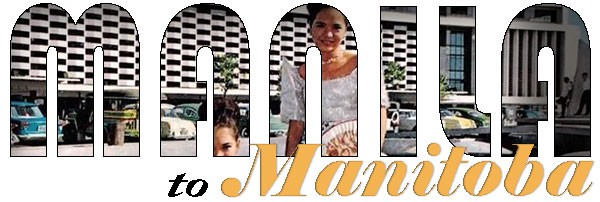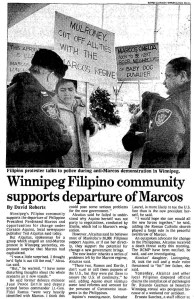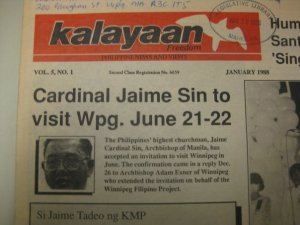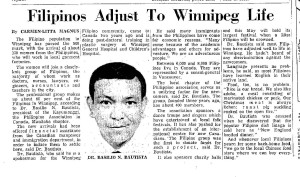Yesterday, I had the privilege of being part of ANAK’s Pananaw 2014 Youth Forum. In conjunction with the United Way, the forum consisted of 17 high school students from Daniel McIntyre and Sisler High School. The participants ranged in grade level from 9 to 12, but all shared in a common heritage as Filipino-Canadians. 15 students were born in the Philippines with the vast majority of them arriving before the age of 13. 2 students were born in Canada. The forum was conducted in both Tagalog and English. The purpose of the workshop was for ANAK to gather direction for future programming and develop policy papers with this new generation in mind. The workshops included discussions in education, employment, immigration, politics (civic engagement), family, and oral history. I was excited to have the opportunity to introduce and (in a very, abbreviated way) train young people in oral history. This blog post will elaborate on this experience.
 In pairs, I had the students interview each other based on a number of “Filipino-Canadian” artifacts they were to choose from. Not quite sure how to grasp the task, the students were then advised that they were writing for an audience in the future, 100 years from now. How would they describe Filipino-Canadians today? The artifacts included a Globe SIM card instruction booklet, Original Pilipino Music VHS Karaoke, papaya skin whitening soap, Filipino candies, Filipino snacks, a 35mm film camera, an airmail envelope, facebook/twitter/BBM icons, Pilipino Express news magazine, and Canada Olympic mittens.
In pairs, I had the students interview each other based on a number of “Filipino-Canadian” artifacts they were to choose from. Not quite sure how to grasp the task, the students were then advised that they were writing for an audience in the future, 100 years from now. How would they describe Filipino-Canadians today? The artifacts included a Globe SIM card instruction booklet, Original Pilipino Music VHS Karaoke, papaya skin whitening soap, Filipino candies, Filipino snacks, a 35mm film camera, an airmail envelope, facebook/twitter/BBM icons, Pilipino Express news magazine, and Canada Olympic mittens.  What resulted from the interviews was a range of answers. Many took the literal route and took the time to describe the item in varying detail. I could feel my age show when I had to describe what a “VHS tape” was to students. I try to forget that this group of young people never owned a VHS or tape player in their lifetime. Some students analyzed the items’ social context. The Papaya skin whitening soap for example was described as something Filipinos use because of an admiration for “white people.” On the other hand, one student described the Filipino candies on a personal level as something that sparks memories of their grandparents when they were growing up in the Philippines. To wrap up the workshop, I had each group present their “museum” to some guests from the “future”. It was a humorous way to see how their descriptions could be used or scrutinized by later generations.
What resulted from the interviews was a range of answers. Many took the literal route and took the time to describe the item in varying detail. I could feel my age show when I had to describe what a “VHS tape” was to students. I try to forget that this group of young people never owned a VHS or tape player in their lifetime. Some students analyzed the items’ social context. The Papaya skin whitening soap for example was described as something Filipinos use because of an admiration for “white people.” On the other hand, one student described the Filipino candies on a personal level as something that sparks memories of their grandparents when they were growing up in the Philippines. To wrap up the workshop, I had each group present their “museum” to some guests from the “future”. It was a humorous way to see how their descriptions could be used or scrutinized by later generations.





